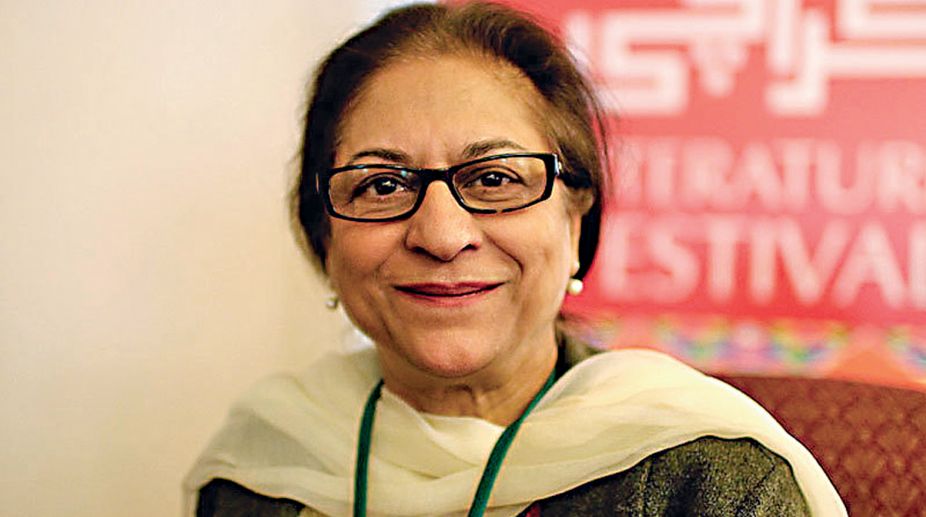Jashn-e-Rekhta Makes International Debut in London
Jashn-e-Rekhta, the renowned Urdu cultural festival, ventures abroad with its international debut in London, promoting the richness of the Urdu language and culture.

Asma Jahangir
In the popular romances constituting the folklore of the Indus Valley, women are the real heroes. In these tragedies, lovers unite only in death, such as in the case of Heer Ranjha and Sohni Mahiwal. Or, the heroine defies the oppressor — even if he is a powerful ruler — who wants her against her will, such as in the legend of Umar and Marui.In the popular romances constituting the folklore of the Indus Valley, women are the real heroes.
In these tragedies, lovers unite only in death, such as in the case of Heer Ranjha and Sohni Mahiwal. Or, the heroine defies the oppressor — even if he is a powerful ruler — who wants her against her will, such as in the legend of Umar and Marui.From Shah Abdul Latif Bhittai to Waris Shah, the heroines of their tales are more assertive, bold, brave and sacrificing compared to the men. They confront the challenges of inhibiting social norms, tribalism, patriarchy, the division between the rich and the poor, and nature.
In fact, Bhittai praises Sat Surmiyoon (Seven Heroines) in his verse, dedicating a sur (long lyrical poem) to each surmi. Sohni Mehar (“Mahiwal” in Punjabi and Urdu becomes “Mehar” in Sindhi), Umar Marui, Sassi Punnu, Noori Jam Tamachi, Lila Chanesar, Sorath Rai Diyach and Momal Rano are all legends about courageous and dedicated women.In my favourite, Momal Rano, Momal and her sisters charm their suitors with puzzles and tricks before robbing and ruining them. It is the famous Kak Mahal (Magical Palace) where these spells are cast.
Advertisement
Sometimes this tale is compared with the Greek myth of Orpheus — the Sirens, the mythical beauties on a rocky island, caused ships to wreck, then looted and destroyed the seafarers. Orpheus overpowers them with his verse, just as Rano overcomes the tricks played by Momal and her sisters and their servants with his intelligence. At the end of this fascinating tale, again it is the woman — Momal — who disguises herself as a man, travels in search of her beloved and jumps into fire after Rano refuses to forgive her because of a misunderstanding.

Rano leaps in after her.In Sohni Mahiwal, Sohni, with the aid of a hard-baked earthen pot, braves the river to meet her beloved on the other side. Her pot is stealthily replaced by her in-laws with an unbaked earthen pot that dissolves in the river, causing her to drown. Mahiwal loves her, but it is Sohni — forcibly married within her own caste of potters after her community finds out about her love for the outsider Mahiwal — who subverts social norms and risks both her safety and reputation each night to meet him. She prefers humanity and love over caste and clan, but her defiance costs her, her life.
Mahiwal drowns himself in the river after her.Waris Shah’s masterful 18th century retelling in verse makes Heer Ranjha the most popular tragic romance of Punjab. Unlike the other heroines of folktales, the tomb of Heer exists in Jhang and has assumed the status of a proper mystic shrine. Interestingly, the legend goes that Ranjha is also buried in the same tomb, but the structure is identified only by Heer’s name.
While Ranjha becomes an ascetic after society condemns Heer and Ranjha’s love for each other, it is Heer who faces the world and stands her ground, refusing to give in to the pressure of her whole family spearheaded by the wicked uncle Kaido, or the Khera tribe who wants to keep her as Saida Khera’s wife.Asma Jahangir belonged to this age-old tradition of heroic women of the Indus Valley.
Her beloved was the land and the people of Pakistan. Her relentless struggle for individual freedoms, human rights, women’s emancipation, equal citizenship for those belonging to minority faiths, rights of children and young people, for ending bonded and forced labour and fostering peace in South Asia made the wicked Kaidos of this world conspire against her all her life.
Consumed by their own propaganda, there are people who continue to lie and spread venom against her. A frail woman causes them sleepless nights even after her death. If Bhittai were alive, he would have dedicated a sur to Asma’s legend. He would have celebrated Ath Surmiyoon or Eight Heroines.
The writer is a poet and essayist based in Islamabad.
Dawn/ann
Advertisement